In rural India, dairies may have only one or two cows and the power grid is spotty at best. The chance to improve the supply chain link from producers to distributors in these conditions offered some surprising lessons to an American startup anxious to solve the “milk challenge.”
The verdict was devastating:
“This will never work for us,” our customer said. It had taken three years to develop a solar refrigerator to solve rural India’s milk spoilage problem. But our prototype, which we unveiled in early 2011, was “too big, too expensive and difficult to install.” We were back to square one. I’m not from India, and no one on our early team had a connection to the country. Despite this — or perhaps because of it — we were captivated by the milk challenge in the world’s largest democracy. And the engineer in me thought I could fix it with the right technology. Turns out, I had a lot to learn.
We first heard about the milk problem in 2007. That summer my business partner Sam White and I were in India conducting a market survey for a solar turbine we developed that was designed to generate hot water and electricity for off-grid schools and clinics in rural India. We found ourselves in Bangalore on a Saturday morning with nothing to do. My partner picked up the phone and cold-called the managing director of Bangalore Dairy, one of India’s largest milk producers. A few hours later we had a meeting scheduled. We walked into his office to find him and his team of 14 engineers seated around a large conference table. They politely listened to our solar pitch, but their reaction was similar to what we had seen before: “It sounds interesting, but how does this solve our problem?”
In the case of Bangalore Dairy, their problem was milk spoilage, and our solar technology had nothing to do with milk. The meeting quickly turned into a reverse pitch where the dairy engineers were asking us for help. This is how I learned about India’s dairy supply chain and the milk challenge.
A RIVER OF MILK
India is a hot, largely vegetarian country that depends on milk for its calories and protein. Milk is used in curries and chai tea and is the product of the (literally) sacred cow. India is the largest producer and consumer of milk in the world. But production in this nation of 1.3 billion people is nothing like the factory farms of the United States.
In India milk is collected from small, individual scattered across the countryside. Each one produces 5 to 10 liters per day — compared to an average output of 6,000 liters in a typical U.S. dairy farm operation. The small amounts of milk produced by individual farmers in remote villages create a massive supply chain challenge for dairy processors who collect the milk, pasteurize it and turn it into finished dairy products sold in major urban areas like Mumbai, Delhi and Chennai. In a country like India, where nearly 50 percent of the employment is in agriculture, urban prosperity depends heavily on the health and vigor of the rural economy.
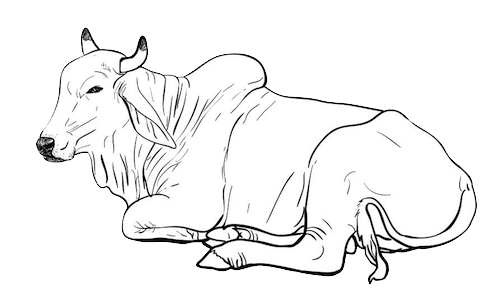
SACRED COWS
In India, cows are held in high esteem in Hinduism, the dominant religion in India. They represent food, fertilizer and economic value. Wandering through traffic, into homes — practically anywhere — cows are privileged members of society. No wonder Grama’s company got the attention of Indian dairy businesses. Keeping cow milk fresh could be sacred business.
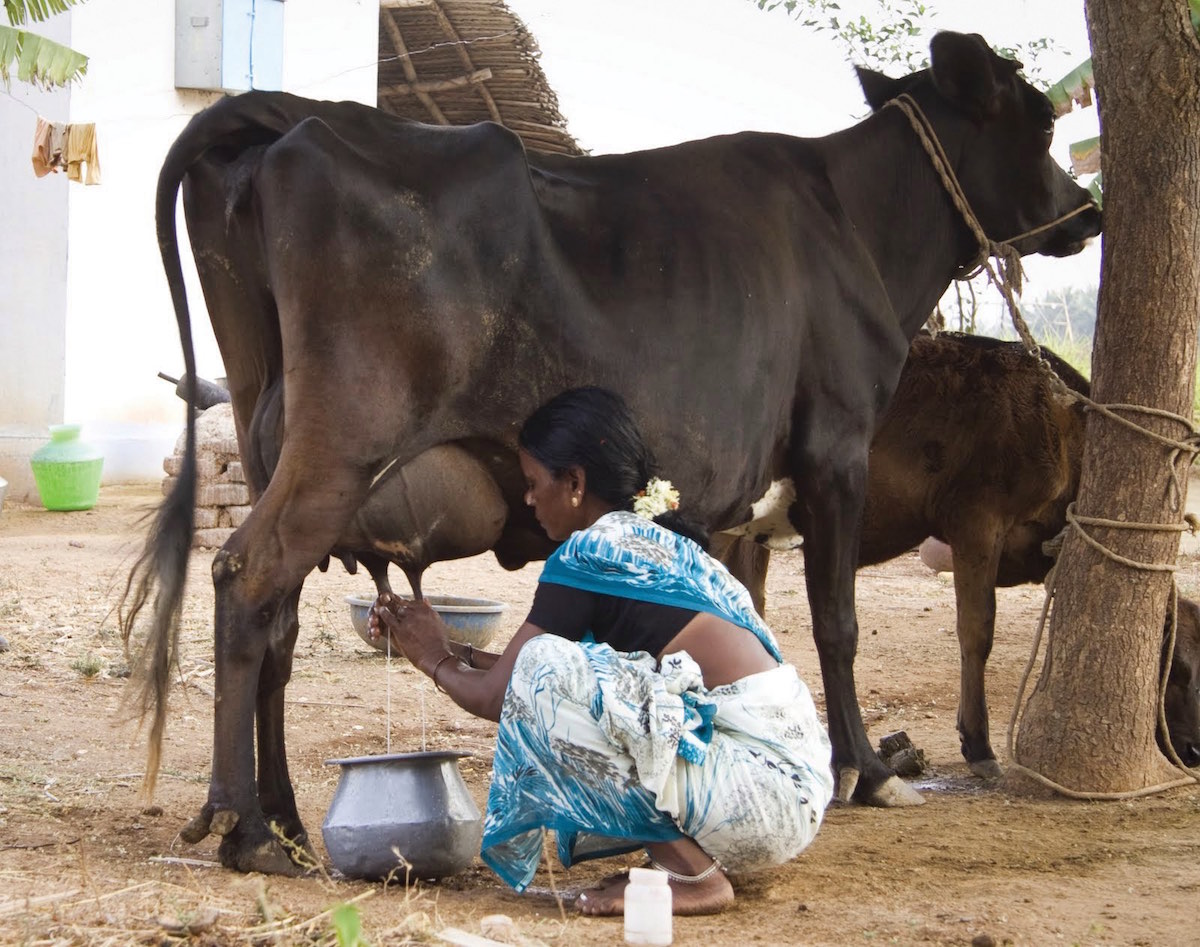
Dairy cows must be milked twice per day, but the milk often spoils before it reaches distributors because Indian roads can be hard to navigate. Grama sought to prolong the milk’s viability to improve the production process. Image by: Lance Casey
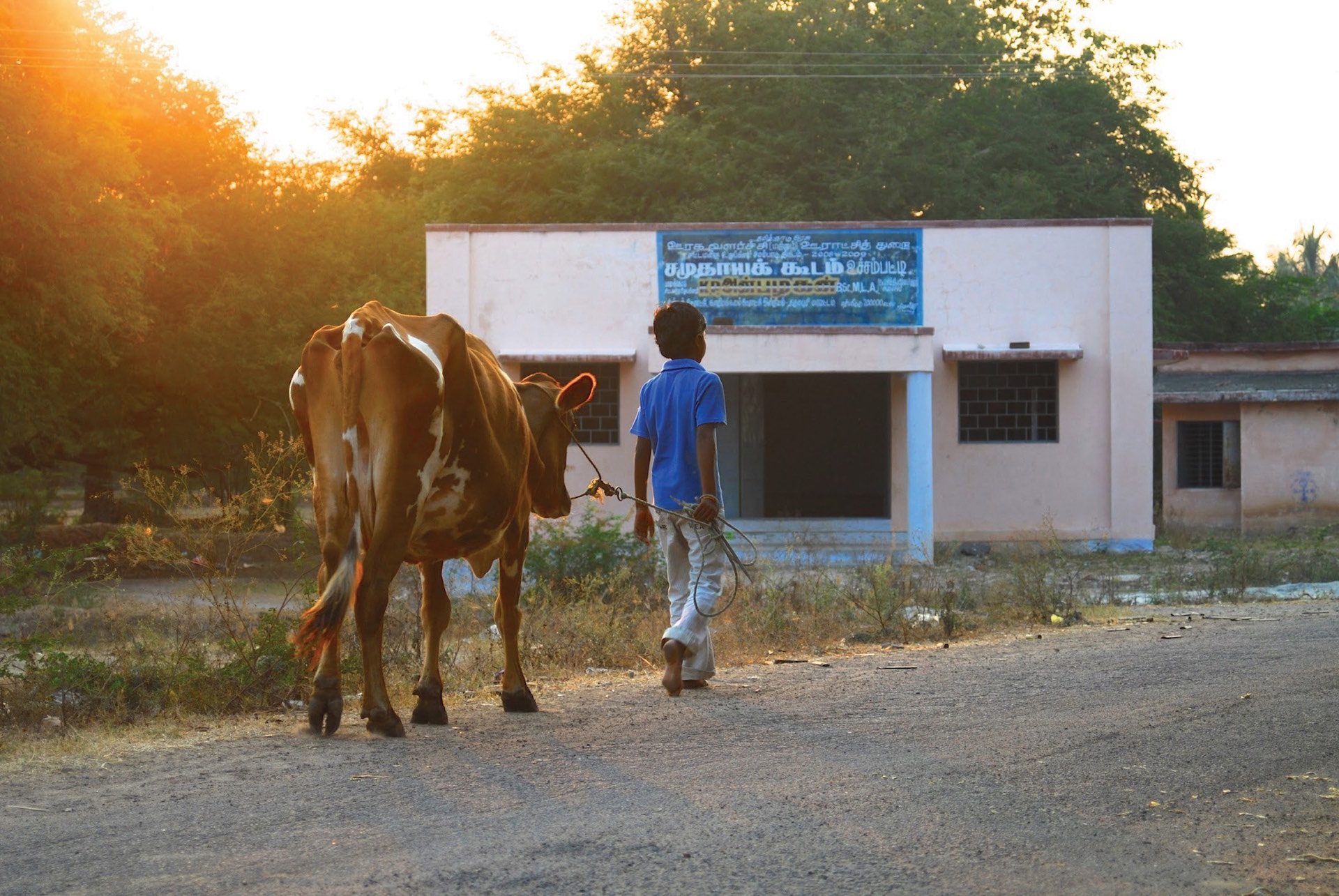
Indian dairies often have only one or two milk cows — tiny operations compared with U.S. dairies that have thousands of animals. Image by: Lance Casey
Milk is like a river that never stops. Raw milk must be aggregated, transported and processed quickly before it spoils. And it must be done twice a day — morning and evening to coincide with the milking schedule — 365 days per year. For farmers, milk is like liquid gold. Rural households depend on sales of milk for disposable income. Unlike other agricultural crops, milk is a daily harvest, and Indian farmers get paid a good amount for their milk. Up to 60 percent of the price of pasteurized milk sold in urban markets goes to these small dairy farmers.
Chilling milk to 4 degrees Celsius immediately after milking preserves its freshness, prevents spoilage and enables it to be transported once a day instead of twice. Refrigeration at the source could elegantly solve all the problems associated with this distributed production system in a single step. But neither industrial milk refrigeration equipment — widely used in most of the world — nor reliable electricity is generally available in rural India.
Thus, the never-ending schedule and lack of refrigeration means transportation costs are enormous, spoilage rates are high and milk quality is very low. What’s more, only those farmers who can be reached within a five- or six-hour ride can deliver milk to central processing facilities.
SOLAR SOLUTION
Enter our solar-powered solution. To address the underlying problem of energy access in villages, I designed a milk chiller powered by solar photovoltaic panels. In the mid-2000s solar technology was sexy — it was coming down in cost and gaining more acceptance. I was passionate about using a renewable, clean form of energy and was determined to make it work. When we mentioned solar to customers and investors, everyone got excited. After all, India is a very sunny place.
After some trial and error, we unveiled our prototype, ready to test it. Unfortunately, on that sunny day in South India in February 2011, my dream of using solar power crashed and burned. The prototype failed to impress our first customer, who had been so interested in our solar solution. He told us that our system was impractical and too expensive for Indian conditions. With that rejection ringing in our ears, we laid off our staff and paused to think about the next steps, if any. After more than three years of work, we were back to square one.
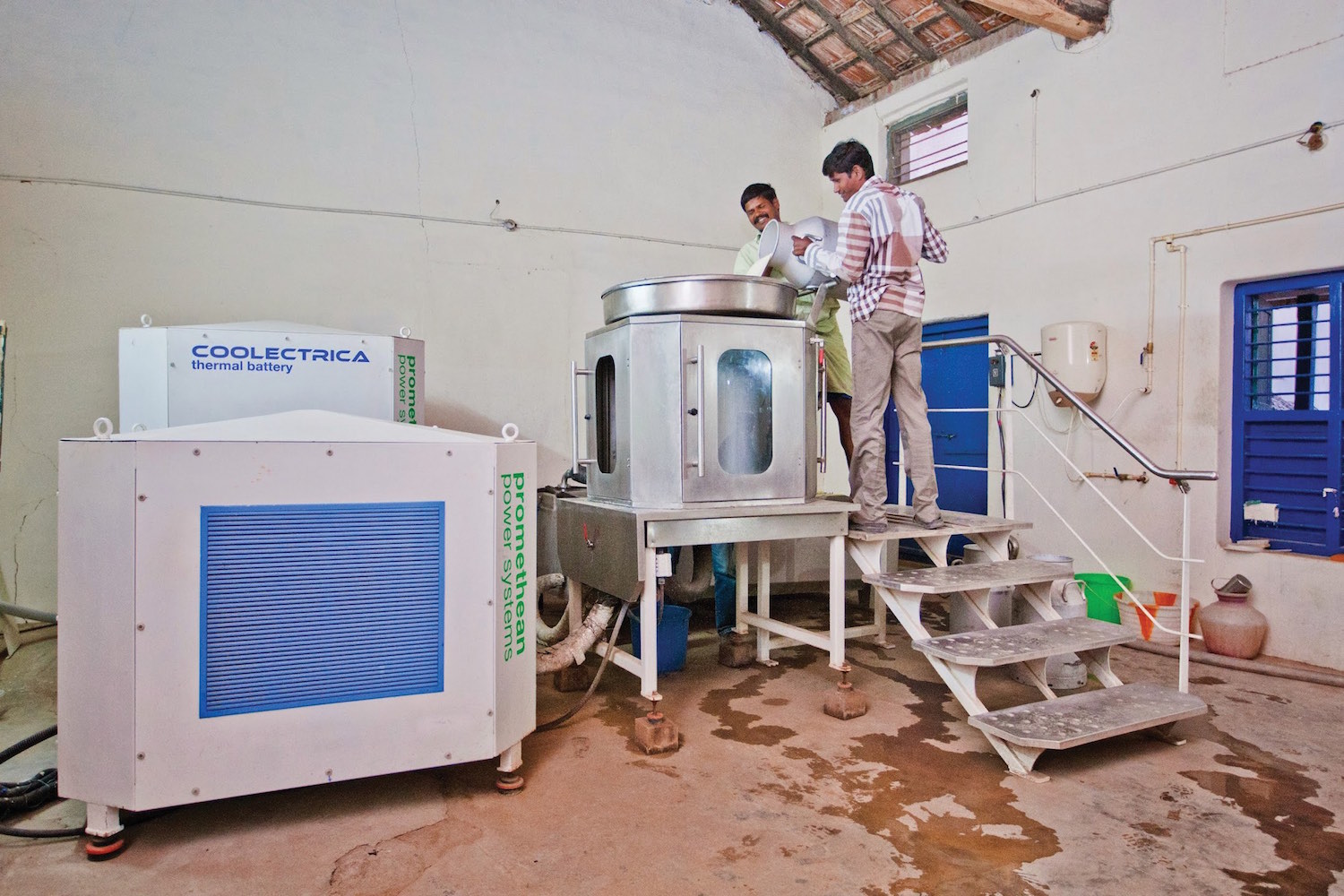
Grama’s solution was a thermal-battery-powered refrigerator that chilled raw milk, preserving it, at the collection point in villages where milk is sourced. The refrigerator’s thermal battery stored energy from the unreliable electric grid in the form of ice, which kept the milk cool until the dairy processors could come to collect it.
But the problem was too big to ignore. What’s more, the customer who rejected the solar system encouraged us continue the effort. Like us, he finally understood that solar was a pipe dream and was willing to continue working with us to find a better solution. The simultaneous rejection and encouragement was effective. With some retrospection, I realized that my passion and bias for solar technology took my focus away from the real problem that needed to be solved.
Most villages in India are already connected to the grid, but the grid is not available around the clock and not always when it’s most needed. This insight led me to a better solution: a battery. If I could store energy from the grid, I could use it during the times when the grid is off.
As it turns out, I had designed a battery for our solar system. I didn’t think much of it because it was just a necessary component to make solar technology work. But it was not just any electrical battery; it was a thermal battery designed specifically for refrigeration. It stores energy in the form of ice and is less expensive and lasts longer than an equivalent electrical battery. With just a few hours of grid power we could run a refrigeration compressor — like the one in your home refrigerator — and make ice. When the grid power is off, the ice chills the milk.
I quickly built a new prototype and tested it — it worked! The simple and inexpensive solution won the day. To solve a big problem in an emerging economy like India’s you often don’t need fancy technologies. You need simple, practical technologies because they’re more affordable and easier to maintain.
PRODUCTION CHALLENGES
Alas, solving the technology didn’t fix everything. Scaling the technology was a whole new challenge. I moved to Mumbai in 2012 to oversee the commercialization of our milk chiller. Progress was slow. A partnership with a manufacturer in Mumbai fell apart when we realized they were investing in another company that was working on products that would compete with ours. Good suppliers were difficult to find and product quality was inconsistent. We had to be vigilant about every single component that went into our system.
In addition to production challenges, we had trouble creating a market. Dairy processors in India, the potential buyers of our technology, are conservative and slow to change. Fortunately, our outsider status as an American company opened many doors. American-made or -designed products are generally viewed positively in India because they are considered to be higher quality. We got meetings with general managers of all the top dairies in India. Innovation in the dairy sector is not very common, and these executives were intrigued by our technology.
But converting initial sales meetings into actual orders was far more difficult than we expected. Adopting a new refrigeration product and changing a decades-old milk collection process was too daunting for most dairies. Only a few visionary leaders who understood the value of higher quality raw milk would adopt the technology. With much effort in the lab and long hours in the field, we delivered and installed 50 systems by the beginning of 2014.
Suddenly, everything came to a grinding halt. While our first customers were absorbing and evaluating the new system, other potential customers were waiting to see the outcome of these trials. Months went by without new orders. We started to wonder if we had missed the market.

Design for the Developing World
When doing business in India, Western business models do not always apply, says Prabhudev Konana, professor of supply chain management at The University of Texas at Austin.
“Most Western business models are based on massive economies of scale, but that doesn’t work in India,” Konana explains. “Production is fragmented. Distribution is extremely complicated.”
With thousands of tiny producers — e.g., dairy operations with one or two cows — and a rural road system that’s sometimes passable only by bicycle, India offers a business environment where simplicity and consistency reign supreme. Technology must work seamlessly, every single time; if it doesn’t, people won’t be willing to risk their tiny margins on it.
“How you design things for less educated, economically poor people is an art in itself,” Konana says.
MEETING MARKET DEMANDS
I spent many days in the field observing our systems, talking to our customers and trying to understand what was wrong. Sometimes customers would tell me directly what they didn’t like about our system. But most of the time, I had to observe and listen carefully to the things they didn’t say in order to understand the hidden needs and frustrations. The effort paid off. The design needed a few more tweaks to make the system easier to clean and operate and more energy efficient. After we made these changes, new orders started to come in within weeks.

Grama, at right, spent time learning from iterations that failed before finding the right solution. He sought feedback from his customers at every step in the journey.
Most notably, our very first customer — a charismatic and visionary industry leader who rejected our solar system and challenged me to find a better solution — began to place repeat orders. He became an valuable champion and the largest user of our technology. To date, he has installed more than 250 systems in South India. I owe him a lot of credit for our success: He was tough and friendly at the same time. Tough because he constantly pushed me to reduce costs and friendly because he was always available to lend a hand when I got stuck. I would spend hours with him drawing concepts and calculating economics of different configurations on a whiteboard in his office. I think he saw a genuine effort on my part, and with that I gained his respect, attention and eventually his business.
It has been a long and arduous journey, but I’ve learned so much. I’ve learned the value of being immersed in the market and the environment where our customers operate. I’ve learned that assumptions need to be frequently checked and adjusted to reality. And I’ve learned that while you might start with a technology looking for a problem to solve, success comes when you actually solve a customer’s problem.
Grama and White talk about their journey with Promethean Power Systems.

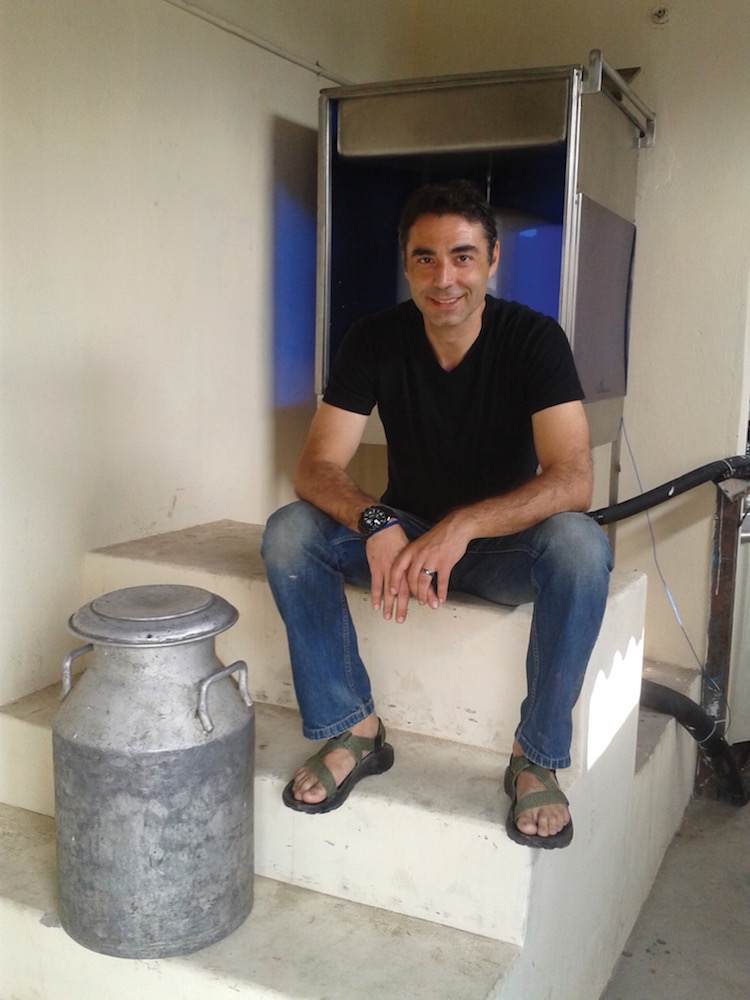
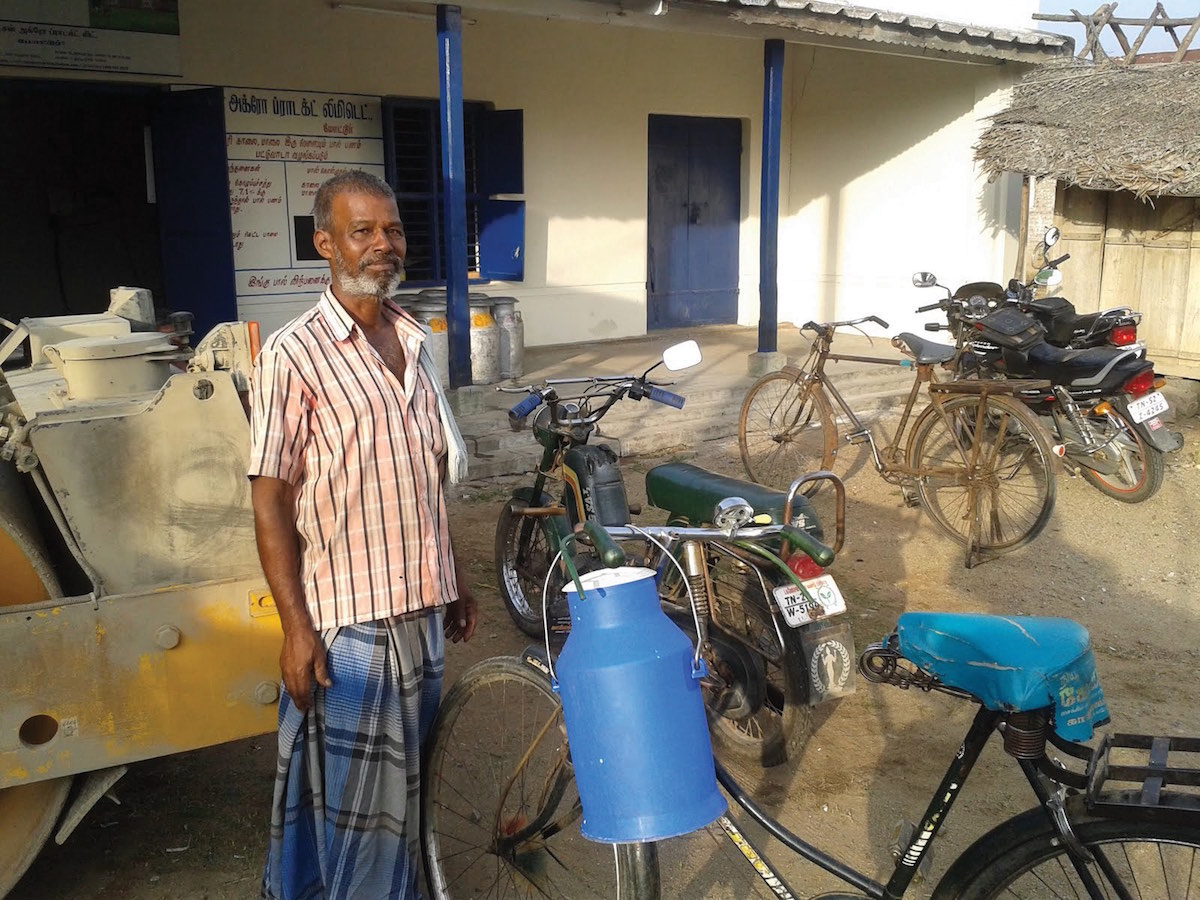
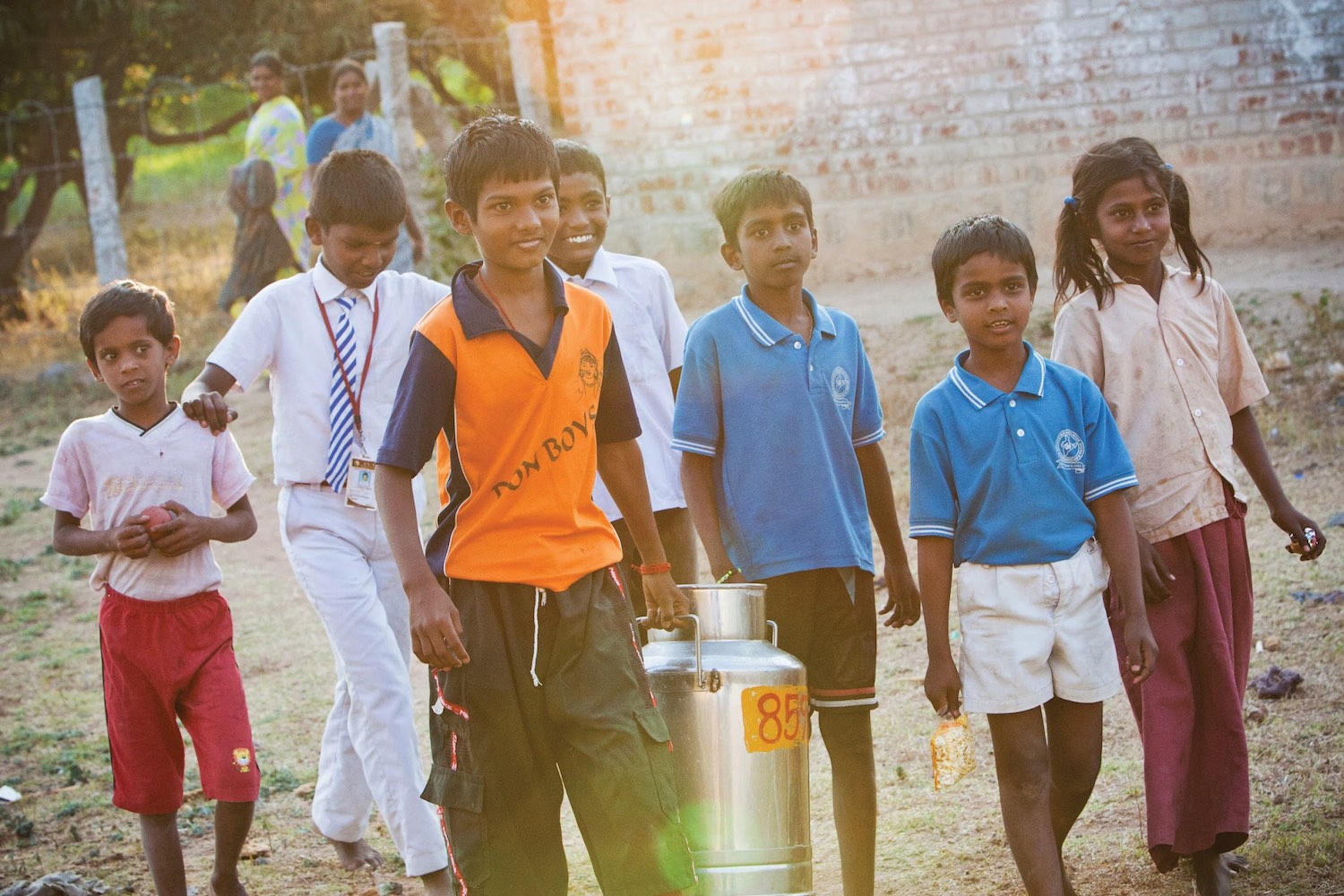

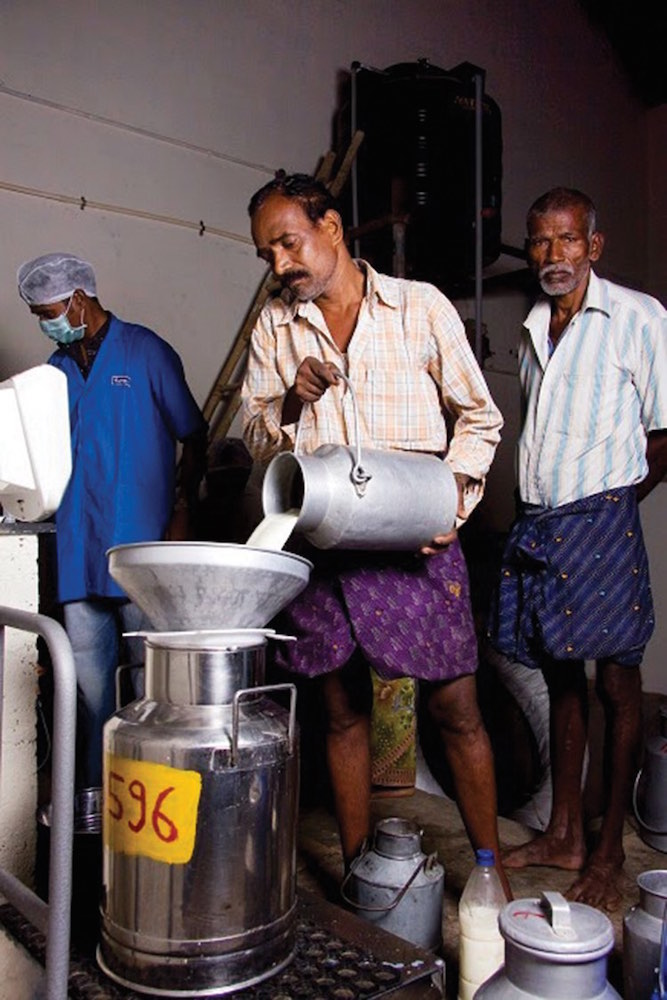
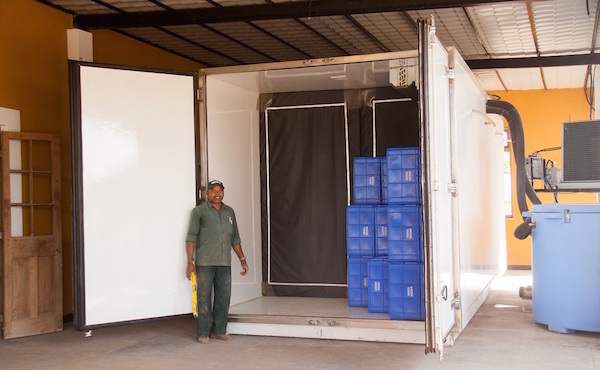
Author
Sorin Grama is an entrepreneur-in-residence at the Martin Trust Center for MIT Entrepreneurship and the Legatum Center for Development & Entrepreneurship. He co-founded and served as CEO/CTO of Promethean Power Systems, a manufacturer of thermal energy storage systems for refrigeration and cold-storage applications. Sorin was the principal inventor of Promethean’s thermal battery, an energy storage device that provides effective backup in areas with unpredictable grid power. He is originally from Romania.